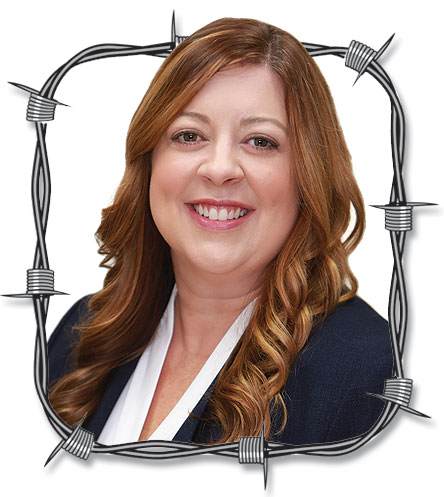 Growing up on a farm and participating in 4-H and FFA, it never occurred to me that I wouldn’t participate in agriculture in some way. I attended the College of Agriculture at the University of Missouri and then completed law school. According to the USDA, women account for 31 percent of America’s farmers. But working on the farm isn’t the only way for young women to impact agriculture.
Growing up on a farm and participating in 4-H and FFA, it never occurred to me that I wouldn’t participate in agriculture in some way. I attended the College of Agriculture at the University of Missouri and then completed law school. According to the USDA, women account for 31 percent of America’s farmers. But working on the farm isn’t the only way for young women to impact agriculture.
My passion for helping others has developed into a career of helping create estate plans for people, their families, and their businesses. Many times in my community, those business owners are farmers and ranchers. Sharing this information is my way of impacting agriculture and helping farmers and ranchers plan for the future.
And for women, who have a longer life expectancy than men, it is especially important to create a plan that will create enough income to support them throughout their lifetime, yet leave the legacy that they desire. Here are a few tips to help you get your estate plan started.
1. Start with defining your goals
Whether you are just starting out or a veteran farmer, everyone needs a plan. That plan will be different for each person and family, but it all starts with the same step, a discussion of your goals. Your succession plan will be customized for your family according to those goals.
Take some time to talk together as a couple about what is most important to you. Do you want the land to stay in the family or remain as a farm? Are you concerned that you might end up spending all of your money on nursing home care? Do you want to leave an equal amount of money to each of your children? Does that include the value of the farm, equipment, livestock, etc.?
And what about farmers who do not have a child interested in coming back to the farm? Finding a successor owner for your business is a difficult task, but the earlier you start, the more time your successor will have to work toward purchasing the farm and equipment, etc.
The bottom line is – communicate with each other. Talk to your spouse about his/her thoughts and opinions. Don’t assume you know what each of your children think. The more you talk about the plan for the future, the better the execution of the plan will be.
2. Bring in the experts
Once you have a general idea of your goals, it is time to start crafting the succession plan. You will need a team of professionals who regularly work with farm families or small business owners. Planning for the succession of a farm is an emotional process. You have worked your whole life to build this business – sometimes generations have been working the same land. Find a team who understands that this is more than just a transaction. This is personal. The succession plan needs to take those emotions into consideration.
Your team could include a variety of professionals: attorney, CPA, trust officer/corporate trustee, insurance agent. While your CPA, trust officer and insurance agent will certainly provide ideas and services, your attorney is the quarterback of the team. Find an attorney who is experienced in estate planning. You need someone who is knowledgeable about all the techniques and strategies that might be used to meet your goals.
3. Execute the plan
After the documents are drafted and executed, you can celebrate! But we’re not finished – we’re just getting started! The succession plan that is put into place needs to be executed. Depending on your goals and the customized plan you have put in place, your estate plan documents likely consist of a Will, Power of Attorney, Healthcare Power of Attorney, and maybe a Trust.
Be sure your family members and those named in a document know where your documents are stored, how to access your assets and who to contact if something happens to you. The Attorney In Fact named in your Power of Attorney should have a copy of the document and know when he/she needs to start acting on your behalf. Do their powers start today or at some point in the future? If you regularly use a certain hospital system, have them review your Healthcare Power of Attorney to be sure it complies with their requirements.
And if you have a Trust, make sure it is funded. Assets are not in a trust until they are retitled into the name of the trust. Be sure to change your bank accounts, deeds, auto titles, and investment accounts into the name of your trust.
4. Review outdated documents
Once the plan is written and executed, it is easy to tuck it away and forget about it. But it is important to have your team review your plan at least every five years or when new laws affecting your estate plan go into effect. Life happens and people change, families grow and new goals are created. Your succession plan will change over your lifetime. Make sure you take the time to review your plan with your family and your team of professionals. The peace of mind is worth it.
Lora Phelps is a trust officer for Arvest Wealth Management.




